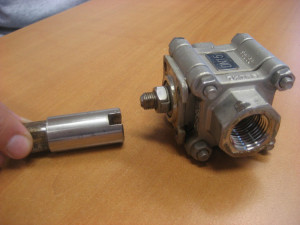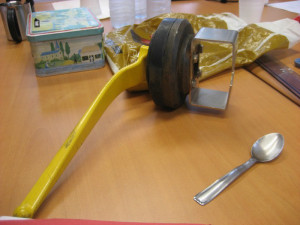While unloading propane from a semi-trailer at 7:45 a.m., a pump operator saw gas continuously exiting the venting device of an unloading station at a propane storage site. He halted the unloading operation and quickly checked the vehicle and station. Not finding an obvious cause, he activated the loading/unloading stations’ emergency stop. This closed all the automatic valves, turned off the compressor, and activated the stations’ deluge systems. He asked the drivers to turn off their vehicles. Despite this, the leak continued to exit the venting device. The pump operator and the depot manager measured the gas concentration. A maximum of 3% of the LEL was measured at the edge of the site (portable monitor) and the threshold of 20% of the LEL was reached at the rear of the truck (in-situ sensor). The depot manager asked the drivers to block the road. After conducting another series of checks, he saw that the manual valve and the bottom valve on the propane truck were open. The leak was stopped at 8:15 a.m.
The incident was caused by failure of the arm’s manual drain valve (a dead man’s switch that automatically closes the valve via a spring). It failed because the valve’s control rod had become disconnected from the valve’s body, possibly due to wear, thus allowing gas to pass through the vent and the venting device when the new unloading operation was started. The leak’s duration (30 minutes) was caused by the driver’s failure to follow procedure and close the push-button valve on the truck. This procedure, which is explained to drivers during the site’s annual awareness campaign, was ambiguously worded. Annual maintenance is performed on bleed valves, such as the one that failed, when the gas arms are checked. The last inspection was carried out one month ago, but nothing unusual had been found. That said, the inspection report says little about the type of inspection that was performed.
An automatic truck safety system is planned as part of a project to replace the sphere with tanks. This system will reduce the duration of possible leaks and avoid human intervention in gas clouds. The inspection authorities also asked the operator to:
- review with its contractor its inspection strategy for this type of valve (dimensional checks of the valve’s parts, systematic periodic replacement of the valve, etc.);
- propose technical solutions to improve the control of the actual positioning of the valve’s rod;
- clarify the wording ‘close the valves’ in its procedure;
- conduct another awareness training module with, at least, the driver involved in the incident and the contractor’s manager.





